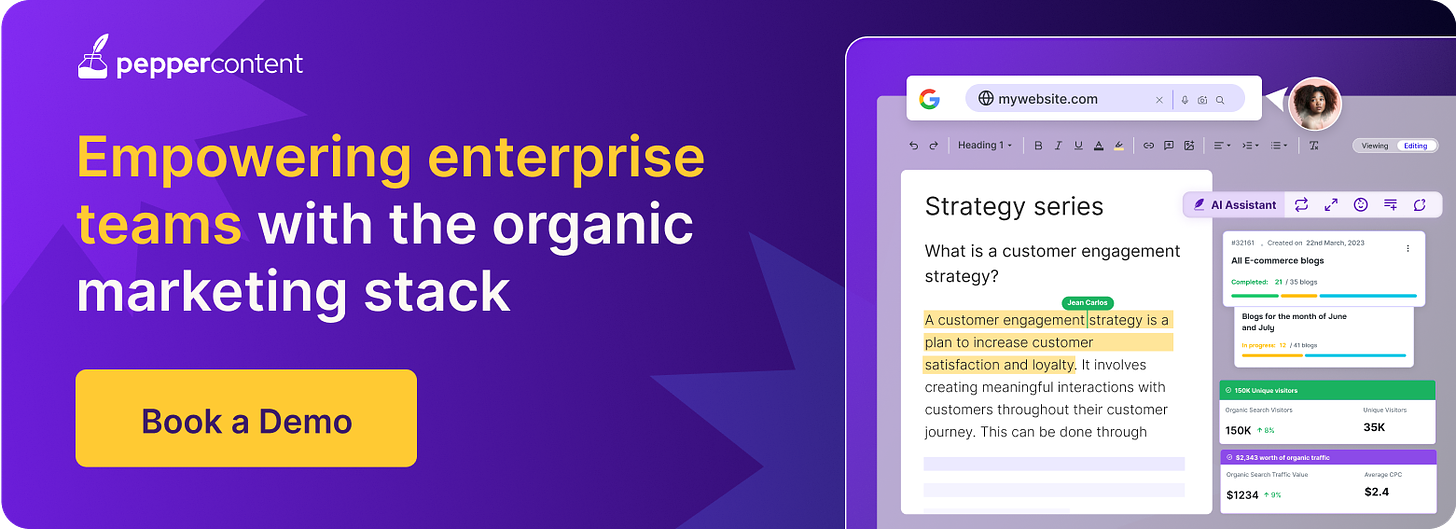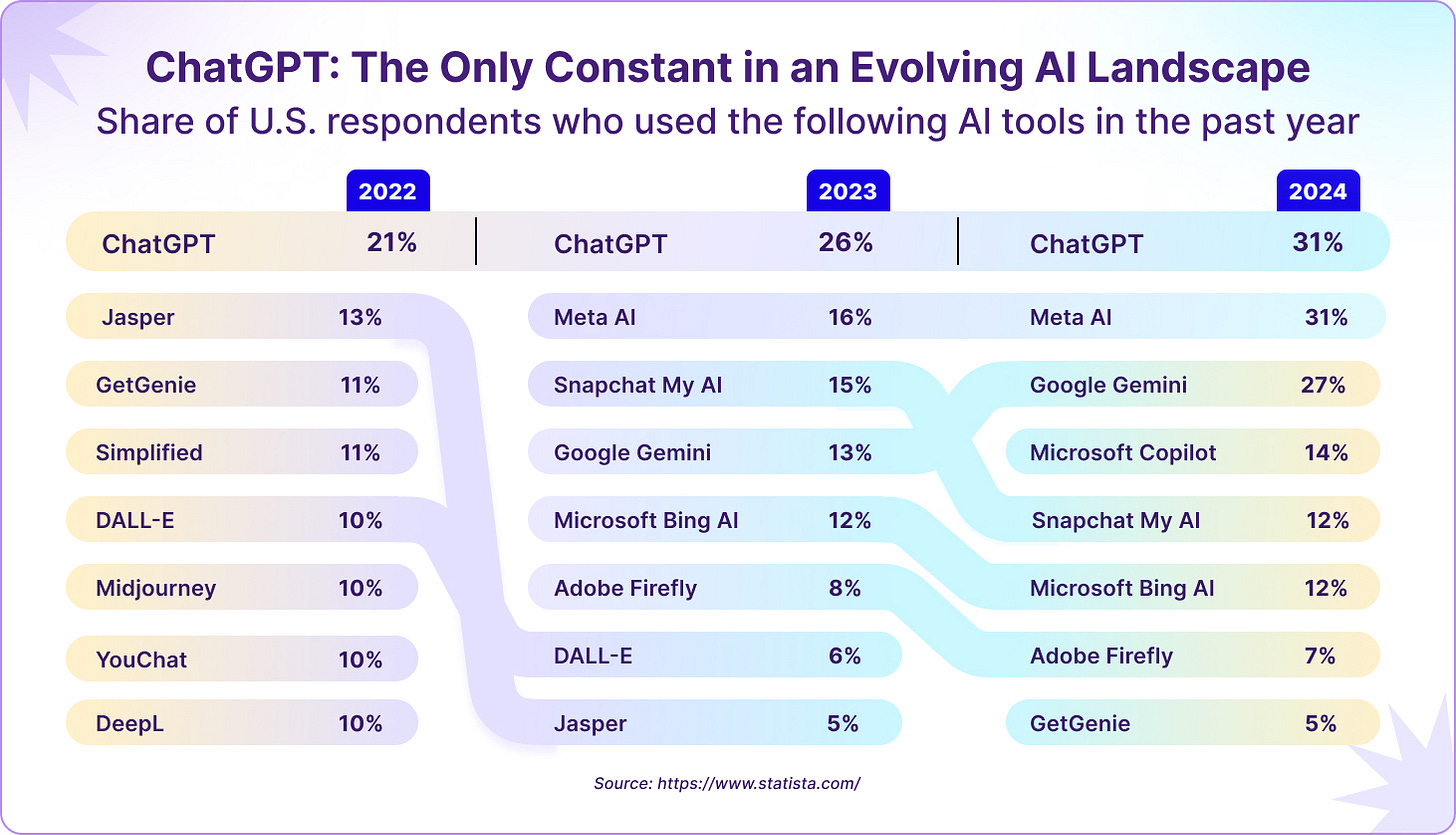Don’t start your 2025 planning before you try this one tactic
This Jeff Bezos-inspired technique will help you create a better plan — and get more budget.
Joe Lazer is the best-selling author of The Storytelling Edge, the fractional head of content & comms at A.Team, and a senior advisor at Pepper.
It’s December, so you know what that means: Marketing Planning Season. The festive time of year when CMOs mainline eggnog and create wishlists like a starry-eyed six-year-old who still believes in Santa — except, instead of mailing a letter to the North Pole explaining why you deserve that robot pony, you have to make a lame PowerPoint deck.
But before you start making slides for 2025, I’d encourage you to try something first.
A couple of years ago at A.Team, I started writing a six-page strategy memo at the beginning of annual planning. I was inspired by Jeff Bezos’ famous practice at Amazon, where PowerPoints are outlawed. Instead, whoever is leading the meeting crafts a six-page, narratively structured memo that all attendees read. This forces the leader to clarify their thinking, and it gets everyone else on the same page.
I’ll be honest: The real reason I co-opted this practice was because my wife was due with our first child in mid-December, and I wanted to get out of Zoom meetings. Instead of listening to me walk through slides, people could just read the logic behind my recommendations.
I broke the memo down into three sections to tell a cohesive story:
Learnings from the past year (successes and failures)
The big challenge for next year (e.g. “2.5x pipeline without increasing marketing budget more than 20%”)
Focus & recommendations for next year (strategy, channels, and investment areas)
Surprisingly, the memo was a hit. I ended up making it available to everyone at the company. Other execs finally understood what the hell marketing was doing. My team had a clear vision of where we were headed. I asked for feedback and received helpful suggestions. Best of all, it actually did get me out of a lot of Zoom meetings!
I’ve kept up the practice ever since. The biggest benefit is that it clarifies my thinking. I have to be honest about what has gone well and what has not — and connect those learnings to my recommendations for the year ahead. I can’t hide behind fancy PowerPoint flourishes.
This tactic turns a wishlist into a treasure map. And it works: I’ve gotten more budget approved than ever before in my career.
So before you open PowerPoint, open a Google Doc first. And don’t worry: You can still chug some eggnog while you write it.
The AI Hype Matrix maps the latest AI news stories across an unimpeachable scale of Hype (everyone is talking about this!) and Fear (will this kill my career? Will this kill EVERYONE?). Here’s this week’s rundown.
Earlier this week, Amazon announced its latest plan for total AI domination. The e-commerce giant is unleashing new foundation models, souped-up AI chips, and what Wired calls a “mega AI supercomputer.” Amazon is bringing Anthropic along for the ride with an $8 billion investment.
OpenAI had a mixed-bag week. Their upcoming Sora video model got an unauthorized sneak peek, and Elon Musk lobbed yet another lawsuit at the company in an attempt to foil its for-profit pivot. On the product front, rumors of OpenAI’s plans to introduce ads — and potentially an AI-powered browser to rival Chrome — suggest they're gunning for Google's lunch money.
In other AI news, Apple's playing catch-up with "LLM Siri" (points for creativity). Perplexity is making moves into e-commerce. And Microsoft Teams will soon let you clone your voice — they say it's so you can use up to nine other languages during meetings, but we suspect it's really for those days when you're too tired to show up.
AI tool usage over the years
A couple of years into the GenAI hype cycle, and ChatGPT is still hanging onto reigning champ status. That lead is shrinking though, with Meta AI nipping at its heels. Google’s Gemini has also doubled its user base since 2023, while once-buzzy tools like DALL-E have faded faster than a New Year's resolution.
Build a content engine that actually works
Jen Holub, VP of content marketing at Scorpion, shares her perspective on building and maintaining an effective content marketing engine after more than a decade in the field.
Here are the key insights from our conversation:
Quality definitively beats quantity. Even Google has explicitly acknowledged that content quality matters more than volume — a significant shift from the content-stuffing approach of early SEO days.
Strong branding and thought leadership should be core KPIs. The logic is simple but powerful: Increased brand recognition leads to more direct searches, which improves rankings organically.
In-house vs. freelance isn't an either-or proposition. Holub highlights the "invaluable" role specialized freelancers can play — citing an entomologist-writer who created thousands of pest control pages as a perfect example.
Remote work can supercharge content marketing teams, but success depends on maintaining strong networking and communication channels. When managed correctly, the flexibility allows for better focus and productivity.
The "secret sauce" is balancing action with analysis. While it's important to try new things, it’s equally critical to research, test, and analyze performance data.
Read the full Q&A with Holub here.
Amazon swings for the fences with Nova
Amazon’s new Nova suite of AI models contains a pretty full lineup:
Nova Micro (a low-cost text-only model)
Nova Lite (a budget-friendly multimodal model for images, video, and text)
Nova Pro (a more robust multimodal with more accuracy and speed)
Nova Premier (the highest-tier multimodal model for complex tasks)
Nova Canvas (for image generation)
Nova Reel (for video generation)
For companies looking to stop talking about AI implementation and actually, you know, implement, Nova is tempting. These models come with enterprise-grade security and seamless AWS integration, which companies already know and trust. The suite's upcoming video and image generation models will also include built-in watermarking — a welcome nod to the growing concerns about AI content authenticity.
The jargon detox challenge
It's almost a new year, and that means time for resolutions, gym membership renewals, and detox regimens. If you're also looking to cleanse your content of corporate buzzwords, this prompt is for you. (We're looking at you, C-Suiter whose every LinkedIn post contains the phrases "leveraging synergies," "digital transformation journey," or "paradigm shift.")
Suggested prompt text:
You are a corporate jargon translator who specializes in making business writing more human and engaging. Your task is to:
1. Identify and highlight any corporate buzzwords or jargon in my text
2. Suggest more natural, conversational alternatives
3. Rewrite the entire piece in a clearer, more authentic voice while maintaining the professional tone
4. Add a brief explanation of why certain changes were made
Here's my text that needs translation:
[INSERT TEXT]
Please maintain the core message and professionalism while making it sound like something a real person would actually say.
















